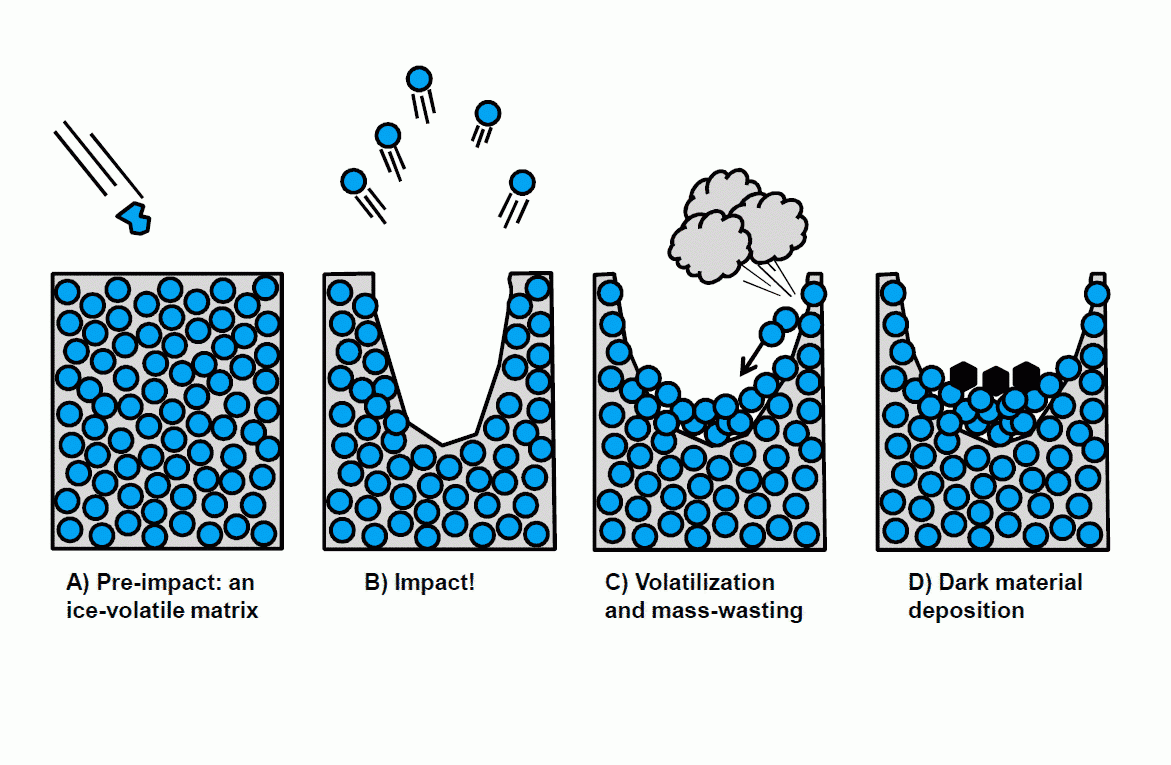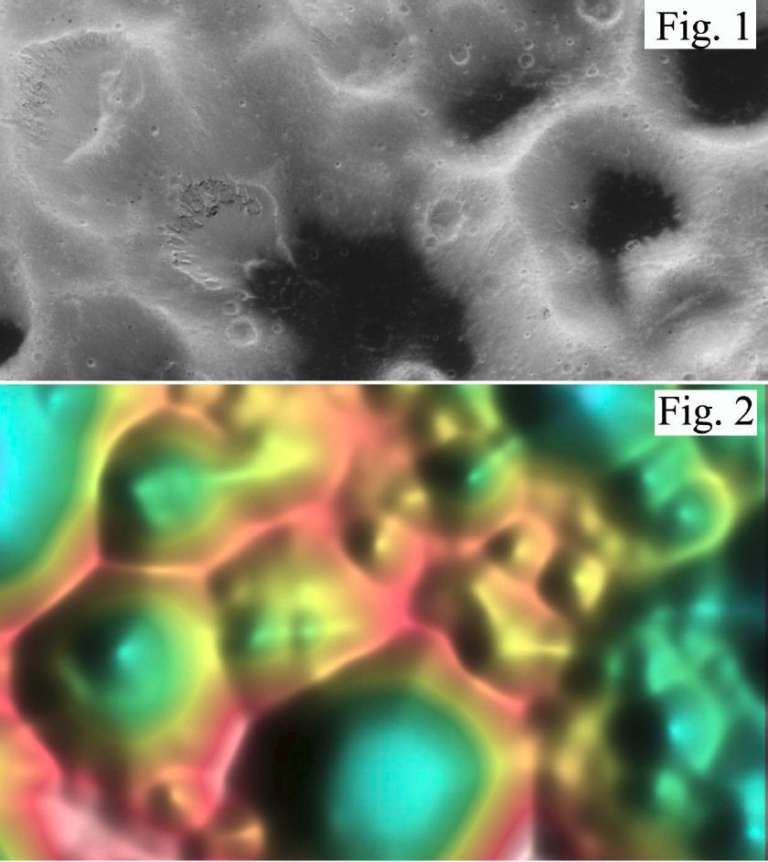Mike Malaska • Mar 23, 2011
LPSC 2011: Sponge-moon Hyperion
Almost two weeks since the Lunar and Planetary Science Conference, and I'm still getting notes on talks! This writeup came from Mike Malaska. By day, Mike is a Ph.D. organic chemist leading drug discovery projects for a pharmaceutical company. By night, he is a space enthusiast fascinated by the surface geology of Titan and other planetary bodies. I thank him for these notes on Hyperion! --ESL
Saturn's moon Hyperion has a bizarre sponge-like appearance that is in dramatic contrast to other heavily cratered bodies in the solar system. In the view below, a relatively massive 130-kilometer diameter crater can be seen to have been blown out of the 270-kilometer moon, followed by further impacts that peppered the surface.

A presentation by Alan Howard and coauthors attempted to explain the appearance of Hyperion through a surface evolution model. Their model assumes that Hyperion is not composed of solid ice, but is instead composed of a matrix of water ice interspersed with a frozen volatile component. Carbon dioxide (CO2) was mentioned as a possibility for the volatile component, but other molecules are possible.

The release (uncapping) of volatile matrix materials along the crater walls weakens the exposed "bedrock" and causes mass-wasting (landslides) into the bottom of the crater, creating crenulated rim shapes and a debris pile at the bottom of the crater (C). Throw in a later addition of dark-colored material that collects in the unlit depths of the crater, and you get the surface we see today (D).
The actual view of the surface of Hyperion (Figure 1) compares well to the projected appearance based on their evolution model (Figure 2).

This scenario portrays Hyperion as a comet-like object that was never warmed by passage in the inner solar system, but was instead subjected over the eons to bombardment followed by localized volatilization of the matrix near the impact. One question asked during the Q and A session: Why don't some of the other small ice moons of Saturn look like Hyperion? One answer given by a member of the audience was that some of the inner moons may have "something else going on," such as overall deposition from ring debris building a layered mantle atop the surface. (This is an explanation proposed for the weird saucer shapes of Pan and Atlas). Hyperion can now be placed at a midpoint in a spectrum that has icy moons at one end, and comets at the other.

Support our core enterprises
Your support powers our mission to explore worlds, find life, and defend Earth. You make all the difference when you make a gift. Give today!
Donate

 Explore Worlds
Explore Worlds Find Life
Find Life Defend Earth
Defend Earth

